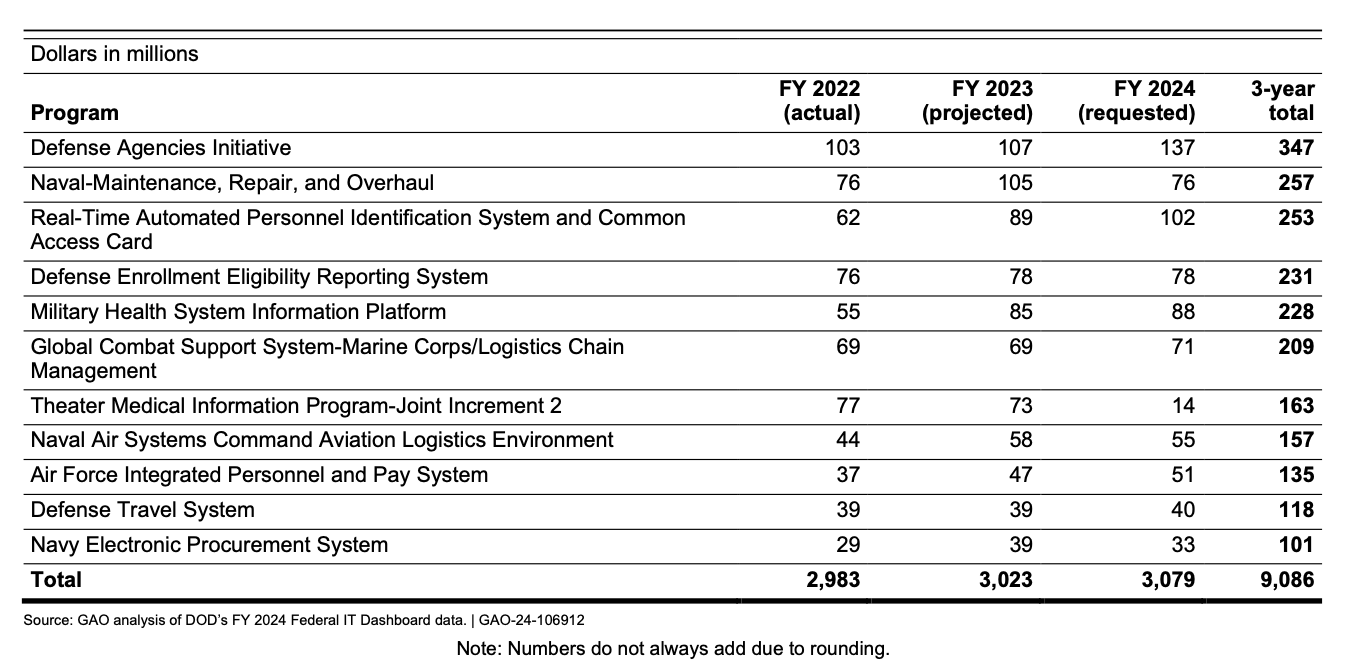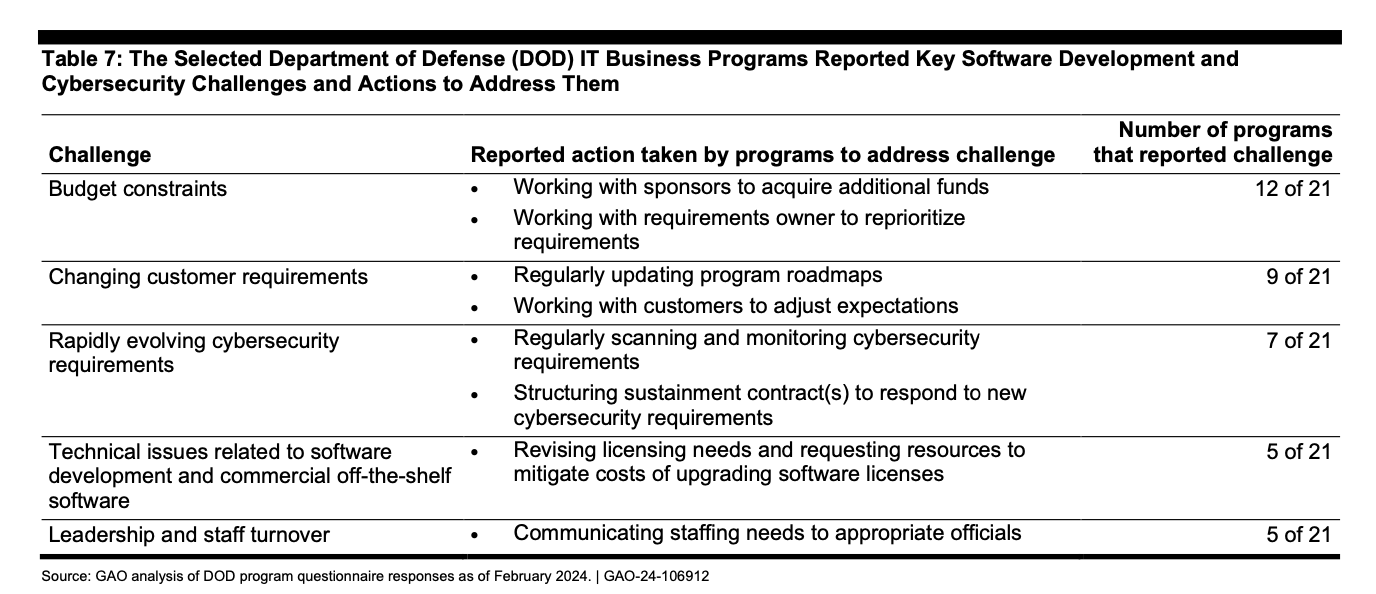
The Department of Defense (DOD) is running ageing and expensive IT systems, with transformation projects hit by delays and attempts to adopt agile approaches hampered by a lingering reliance on external off-the-shelf software.
A new report from the Government Accountability Office (GAO) has highlighted major challenges across the DOD's systems, calling on the department to "strengthen" its software metrics and address "continued cybersecurity and reporting gaps."
The investigation found that DOD’s planned expenditures for 21 selected IT "business programs" totalled $9.1 billion between 2022 and 2024. The four largest programs accounted for half the total spend.
However, officials throughout the Department "acknowledged that budget constraints remain a challenge."
"Several of the DOD IT business programs reported experiencing cost increases and schedule delays and reported mixed progress on performance," GAO wrote.
"Six programs did not fully report performance data. In addition, several programs did not have an approved cybersecurity strategy, as required by DOD."

Lags and legacy systems
The average age of all the DoD systems GAO reviewed in the study was 17 years.
Officials from 15 of the 21 business programs admitted "experiencing cost or schedule changes" since January 2022.
Four of these programs also revealed details of plans for "rebaselining or expecting to rebaseline as a result of the changes", using a term that a handy public sector glossary defines as "a major realignment of the performance measurement baseline to improve the correlation between the work plan and the baseline budget, scope, and schedule."
More than half (13) of the programs reported cost increases ranging from $0.5 million to $1.3 billion - a median of $163.3 million - and seven programs reported delays ranging from 15 months to 36 months (a median of 12).
"The program officials provided a variety of reasons for the changes, including new requirements and unanticipated technical complexities," GAO wrote.
READ MORE: DARPA is creating “reprogrammable microorganisms” to produce petrochemicals
Over two-thirds of IT spending is allocated to keep the lights on rather than funding innovation, with 70% ($6.4 billion) of the total reported cost across three years going on "operating and maintaining the systems and 30% ($2.7 billion) for "development and modernization."
The 21 programs studied have made "mixed progress on performance". They are required to identify and track at least one of five metrics covering customer satisfaction, business results, financial performance, and innovation.
Just four of 21 programs met all performance targets, while 10 met at least one. A single program didn't manage to hit any of the targets, and six couldn't even be bothered reporting their progress, as mentioned earlier.
The top four most expensive programs were: DOD Healthcare Management System Modernization (DHMSM), Navy Enterprise Resource Planning (Navy ERP), Distribution Standard System (DSS), and Defense Enterprise Accounting and Management System (DEAMS). Together, they accounted for $4.6 billion (51 %) of the total $9.1 billion in planned costs.

In February 2018, the Defense Science Board specifically recommended that DOD implement iterative software development approaches such as Agile, DevOps or DevSecOps.
Just under half (10) of the 21 DOD programs have followed orders and now claim to be using agile and iterative approaches.
"However, in areas related to tracking customer satisfaction and progress of software development efforts, four of the 10 programs did not use metrics and management tools required by DOD and consistent with ones identified in GAO’s Agile Guide, or did not provide documentation demonstrating their use," the accountability department wrote.
"The reason the majority of these programs reported not conducting these practices is that the business systems heavily leverage commercial off-the-shelf products to deliver their services," it said.
There has been a "DOD-wide effort" to transition using software factories to support programs developing their own code for software in areas such as weapon systems, the report continued.
GAO called on all departments to "accelerate development of the DOD enterprise cloud environment," establish a "department-wide software factory environment," and transform processes to "enable resilience and speed."
"We are making one recommendation to the Department of Defense that the Secretary direct the Chief Information Officer and Under Secretary of Defense for Acquisition and Sustainment to ensure that IT business programs developing software use the metrics and management tools required by DOD and consistent with those identified in GAO’s Agile Assessment Guide," it advised.